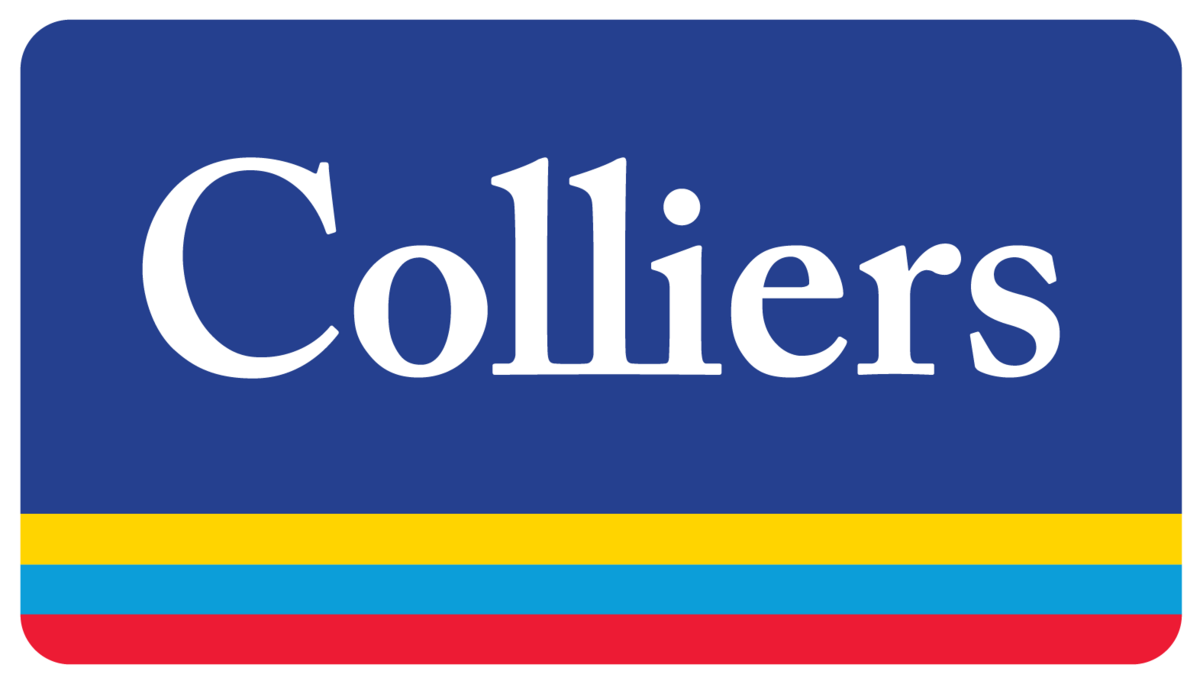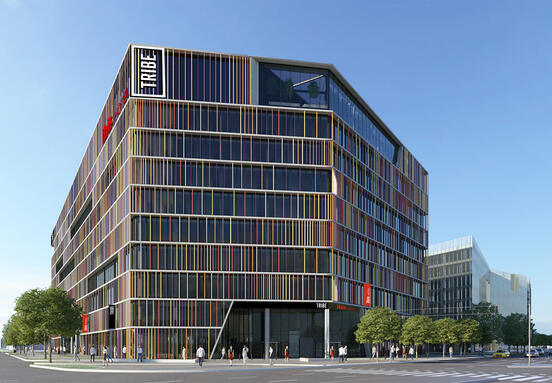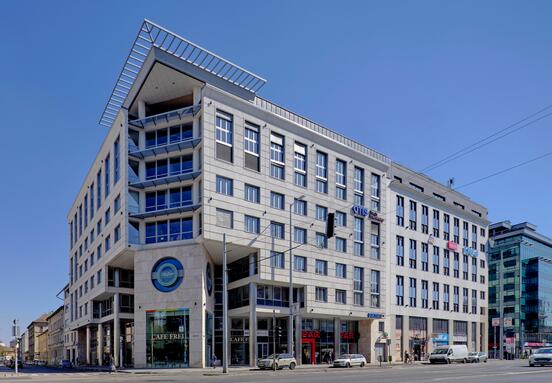The Central and Eastern European industrial and logistics real estate market is entering a new phase of maturity and resilience, according to Colliers’ latest report ExCEEding Borders 2025: Navigating Strategic Opportunities and I&L Real Estate Market in CEE-14. Covering 14 countries across the region, the report reveals a stabilizing market environment, a rebound in investment volumes, and a growing emphasis on ESG, urban logistics, and labour market transformation.
“Despite global trade fragmentation and geopolitical uncertainty, the CEE region continues to demonstrate strong fundamentals and strategic positioning within global supply chains,” said Grzegorz Sielewicz, Chief Economist for CEE at Colliers. “The CEE industrial and logistics sector is not only recovering but evolving—driven by it’s location, infrastructure investment, and the region’s competitive cost base.”
Key Highlights from the Report:
- In Q1 2025, I&L investment volumes in CEE surged to €800 million, reclaiming the sector’s top spot among asset classes. Total investment volumes across the region grew by 143% year-over-year in Q1 2025, following a 70% increase in 2024.
- Poland remains the regional leader, accounting for nearly half of the CEE-14’s I&L stock and showing strong demand across logistics, manufacturing, and urban warehousing formats.
- ESG adoption is gaining momentum, particularly in the CEE-6 countries, with a growing number of certified green buildings and rising tenant demand for sustainable solutions.
- Urban logistics formats such as Small Business Units (SBUs) and Last Mile Logistics (LML) are expanding, especially in capital cities like Warsaw, Sofia and Tallinn reflecting changing consumer behavior and e-commerce growth.
- The manufacturing sector continues to anchor demand, with countries like Czechia, Hungary, Poland and Romania seeing robust activity in automotive, electronics, and light industrial production.
- Labour markets across the region remain resilient, with low unemployment in key markets and increasing focus on reskilling and vocational training to meet the needs of advanced manufacturing and logistics operations.
- Strategic opportunities in advanced manufacturing are expanding across the CEE countries, driven by strong capabilities in machinery, chemicals (e.g. green technologies such as ion-exchangers based on polymers) and pharmaceuticals (e.g. vaccine production) supporting industrial diversification, export upgrading, and long-term competitiveness.
Country Snapshots:
Poland is the most developed I&L market in the CEE-14 region, with over 34 million m² of stock and strong demand driven by logistisc, e-commerce, and manufacturing—particularly in the automotive sector. Despite a slight slowdown post-pandemic, the market remains resilient with stable rents, a growing stock of urban logistics formats, and stable demand. Labour shortages persist, but Poland benefits from one of the lowest unemployment rates in Europeand continues to attract foreign investment and talent.
Czech Republic’s I&L market is the second most advanced in the CEE region, with over 12 million m² of stock and one of the lowest vacancy rates among peers, which hoever would be highier including so called shadov vacancy in facilities under construction. While the market began recovering in late 2024, demand remains moderate and speculative development cautious. The country’s strong manufacturing base, especially in automotive and high-tech machinery, continues to drive leasing activity despite labour shortages and rising complexit
Hungary is emerging as a hub for electric vehicle components and battery production. Budapest’s industrial and logistics market has grown steadily, driven by nearshoring and demand for proximity to European markets. Outside the capital, development is shaped by infrastructure access and foreign direct investment, with a focus on pre-leased, specialized assets over speculative builds.
Romania’s I&L market is structurally undersupplied but shows strong long-term potential, with total stock at 7.5 million m² and vacancy stable at 5%. While 2024 saw a slowdown due to global
uncertainty, demand is gradually expanding beyond Bucharest, supported by infrastructure improvements and nearshoring trends. The manufacturing sector—especially automotive—has grown significantly post-pandemic, and labour shortages persist despite moderate wages and increasing foreign worker recruitmen.
Slovakia’s I&L market is experiencing a slowdown, with muted demand and rising “hidden” vacancy due to downsizing and subleasing activity. Despite this, the country maintains a solid manufacturing base—especially in automotive—and continues to attract investment in logistics parks near Bratislava and Trnava. Vacancy rates and rents remain on a moderate level compared
to other CEE countries, but labour shortages of skilled workforce and increased taxation pose challenges to future growth.
Bulgaria’s I&L market remains relatively small but stable, with low vacancy rates in the capital city (2.3%) and limited modern space under construction. Demand is shifting toward lower-spec
areas due to supply constraints, while ESG adoption is still in early stages, with tenants hesitant to pay a “green premium”. Labour shortages in technical fields and an aging workforce pose challenges, though the country benefits from its strategic location as a gateway to Turkey and Asia.
Estonia’ I&L market saw its second-highest new supply volume in 2024, with 75% of completions coming from build-to-suit projects and a total stock of 2.8 million m². Vacancy rates remain
healthy at 4.5%, supported by strong relocation trends, though high construction costs and a limited labour pool constrain further expansion. While demand is stable across logistics, wholesale, and production, the market is increasingly shaped by infrastructure projects like Rail Baltica and a growing focus on modern, energy-efficient facilities.
Latvia’s I&L market is growing steadily, with total stock in Riga reaching 1.6 million m² and a vacancy rate of 3.2%. Development is shifting from the airport area to Dreiliņi, which is emerging as a new industrial hub, while demand remains stable. The market is supported by strong interest in stock-office formats and a healthy pipeline, although competition from traditional logistics parks continues to influence absorption.
Lithuania experienced a record year for logistics development in 2024, with major completions in Vilnius and Kaunas pushing total national stock to 2.2 million m² and vacancy rate in capital city slightly above 5%. Despite economic headwinds, demand remained healthy—particularly in the 1,000–5,000 m² range—driven by logistics and retail sectors. Developers continue to invest in land banks, and the market is expected to maintain momentum in 2025, supported by strong fundamentals and growing interest in sustainable, certified facilities.
Serbia has the most developed I&L market in the SEE-5 region, with 6.5 million m² of stock primarily concentrated around Belgrade and major transport corridors. The market is driven by logistics and light manufacturing, especially in automotive and food sectors, with growing activity in secondary cities like Niš and Sremska Mitrovica. Demand remains strong, supported by Serbia’s central location, expanding infrastructure, and government-backed investment incentives.
Croatia’s I&L sector is the fastest-growing segment of its commercial real estate market, with Zagreb as the primary hub and expanding activity in regional zones like Rijeka and Split. Despite strong demand and record-low vacancy rates, the supply of modern logistics space remains limited, pushing rents upward in prime locations. Future growth will depend on the pace of new developments and continued infrastructure investment beyond the capital.
Slovenia’s I&L sector is stable and active, with strong demand for modern, energy-efficient logistics facilities, particularly around Ljubljana and the port of Koper. Despite limited new supply due to high land and construction costs, vacancy rates remain below 5%, and investors are shifting toward larger, high-specification projects. The market is adapting to ESG trends, with a growing preference for sustainable developments aligned with global standards.
Albania’s I&L sector is in its early stages of development, with 90,500 m² of stock and no vacancies, concentrated mainly in the Tirana–Durrës–Elbasan corridor. While modern parks like Tirana Industrial Park and Tirana Logistics Park have been developed, the market still relies heavily on older, smaller warehouses. Growing demand—driven by reshoring, infrastructure upgrades, and interest in sectors like textiles and fashion—signals long-term potential, though labour shortages and limited vocational training remain key challenges.
Montenegro’s I&L sector is still in its early stages as well, with just 15,000 m² of total stock and a high vacancy rate of 9%. The market is constrained by limited industrial capacity and workforce challenges, but recent infrastructure investments—such as the Bar–Boljare highway and the strategic port of Bar—are improving logistics connectivity. While investor interest is growing, future development depends on attracting international tenants and expanding vocational training to support industrial growth.
Colliers








